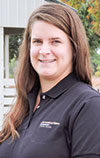All forage-induced disorders are caused by the interaction of three variables creating a negative impact on the animal: the plant, the animal and the environment. In the case of grass tetany, this disease is caused by a low blood magnesium (Mg) level in the animal, typically caused by low Mg levels in the forage they are grazing.
Grass tetany is typically associated with early spring grazing of lush, grass-dominated pastures, but can occur with grazing of regrowth in intensively grazed pastures during the summer as well. In both these scenarios, plants are rapidly growing which results in low Mg and high potassium levels. High potassium reduces the absorption of Mg while being digested in the rumen. This reduces the amount of total Mg available to the animal for absorption, creating a Mg deficiency, leading to grass tetany.
Other factors that can reduce Mg are the application of nitrogen fertilizers during poor growing conditions. The application of fertilizer stimulates rapid growth in forages; however, under poor growing conditions, including drought or infrequent watering, this can lead to mineral imbalances within the plant. To prevent this, you can use a phosphate fertilizer or incorporate clovers into your pasture, as they do not have the same risk of low Mg that cool-season grasses have.
Keep in mind, a cow in peak lactation six to eight weeks after calving is at a higher risk for tetany because of her increased demand for Mg. Lactating cows need a constant source of Mg to replace the large amount used to produce milk. If you have had issues with grass tetany in the past, you can provide a magnesium supplement, such as magnesium blocks, to prevent more cases occurring.
A better option is to help prevent low magnesium in plants during these crucial times. Management considerations include fertilizing at different times and incorporating clovers and other forages with higher Mg concentrations.
There are many combinations of plant, animal and environmental factors that can cause negative impacts on an animal’s health. Being mindful of the risk of grass tetany and making management changes when needed can help keep cattle safe from tetany during the summer months. ![]()

-
Carmen Willmore
- Extension Educator
- University of Idaho Extension – Lincoln County
- Email Carmen Willmore







